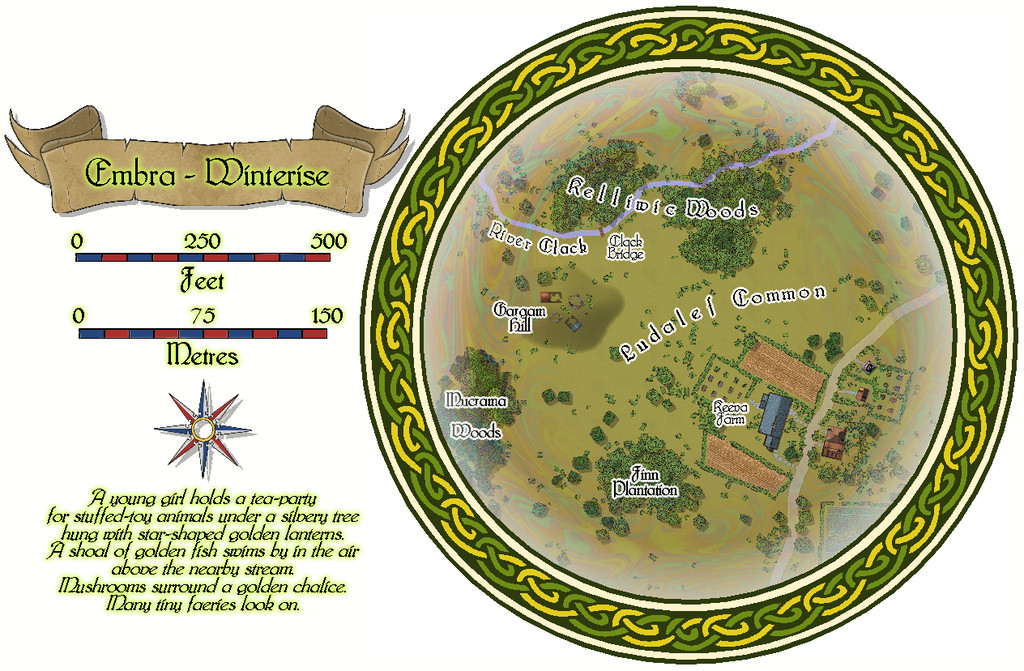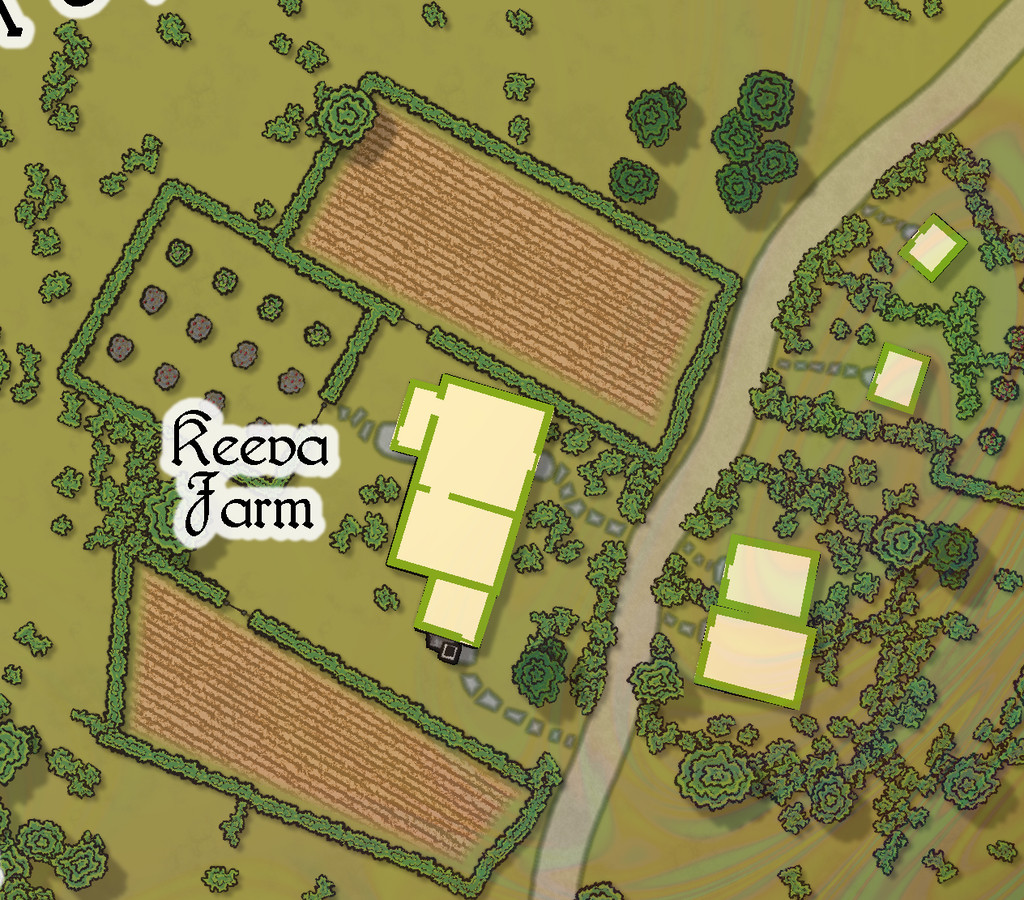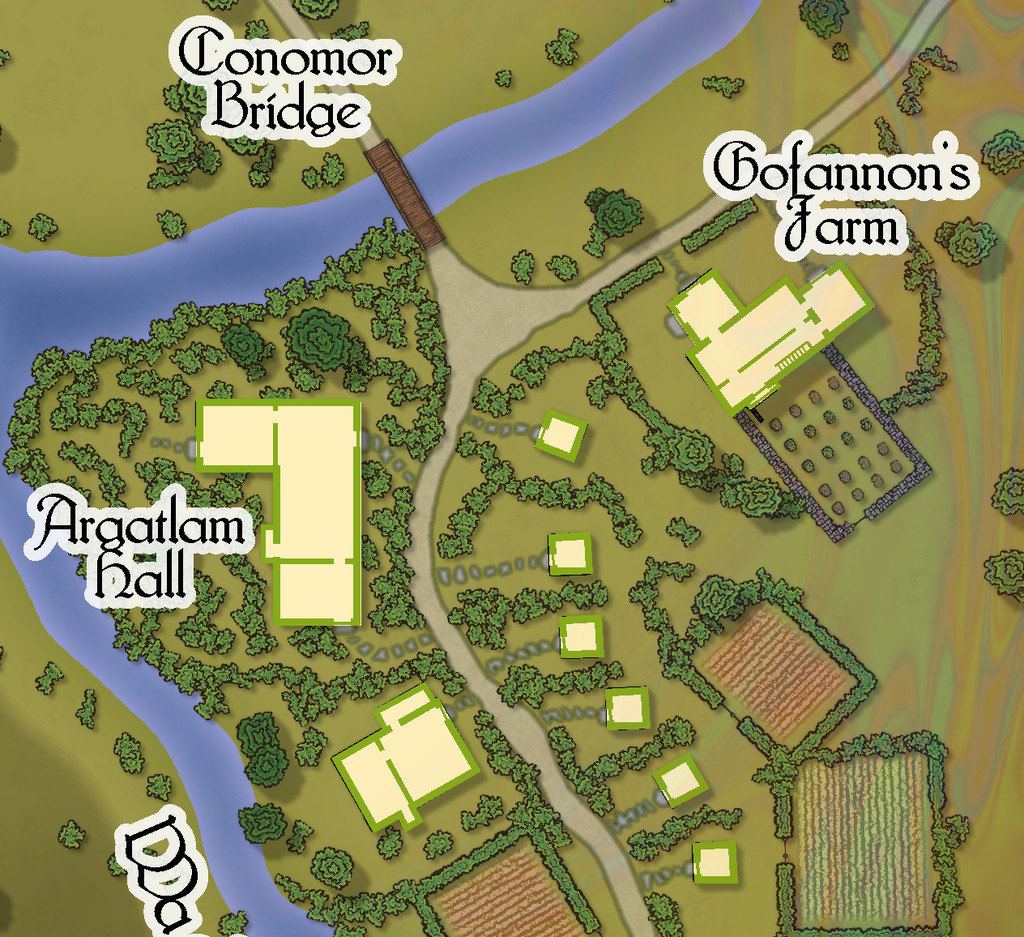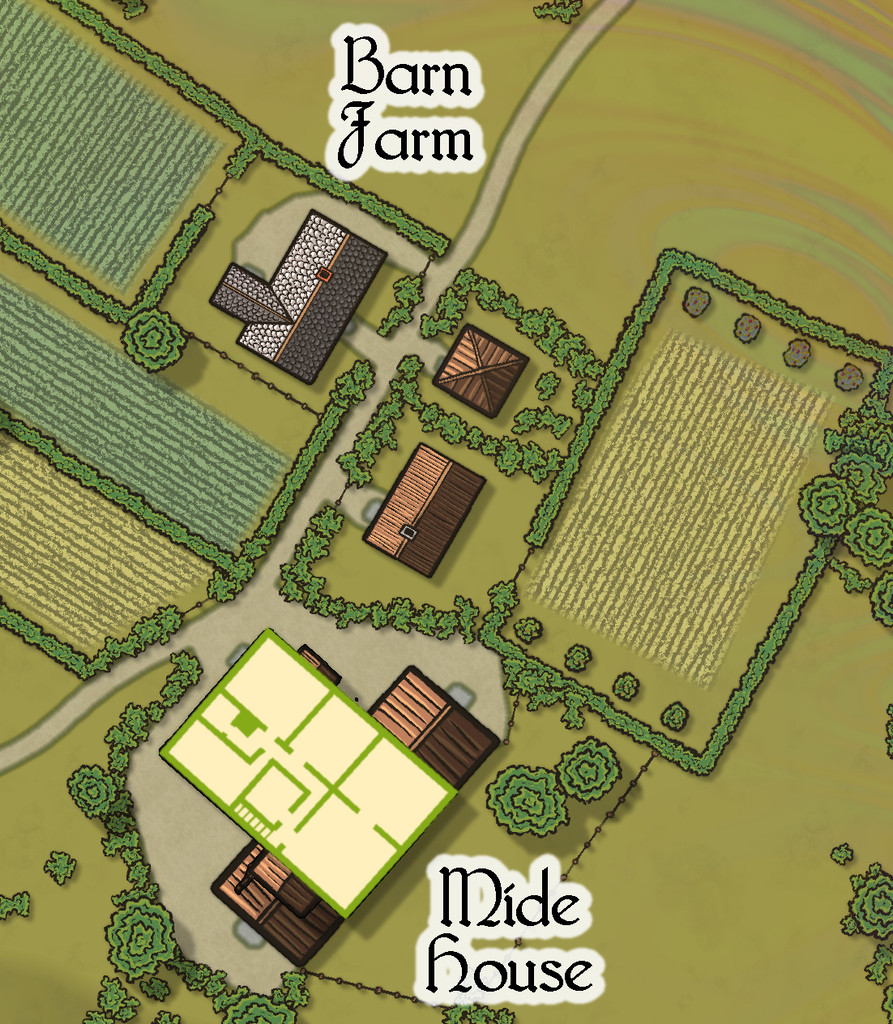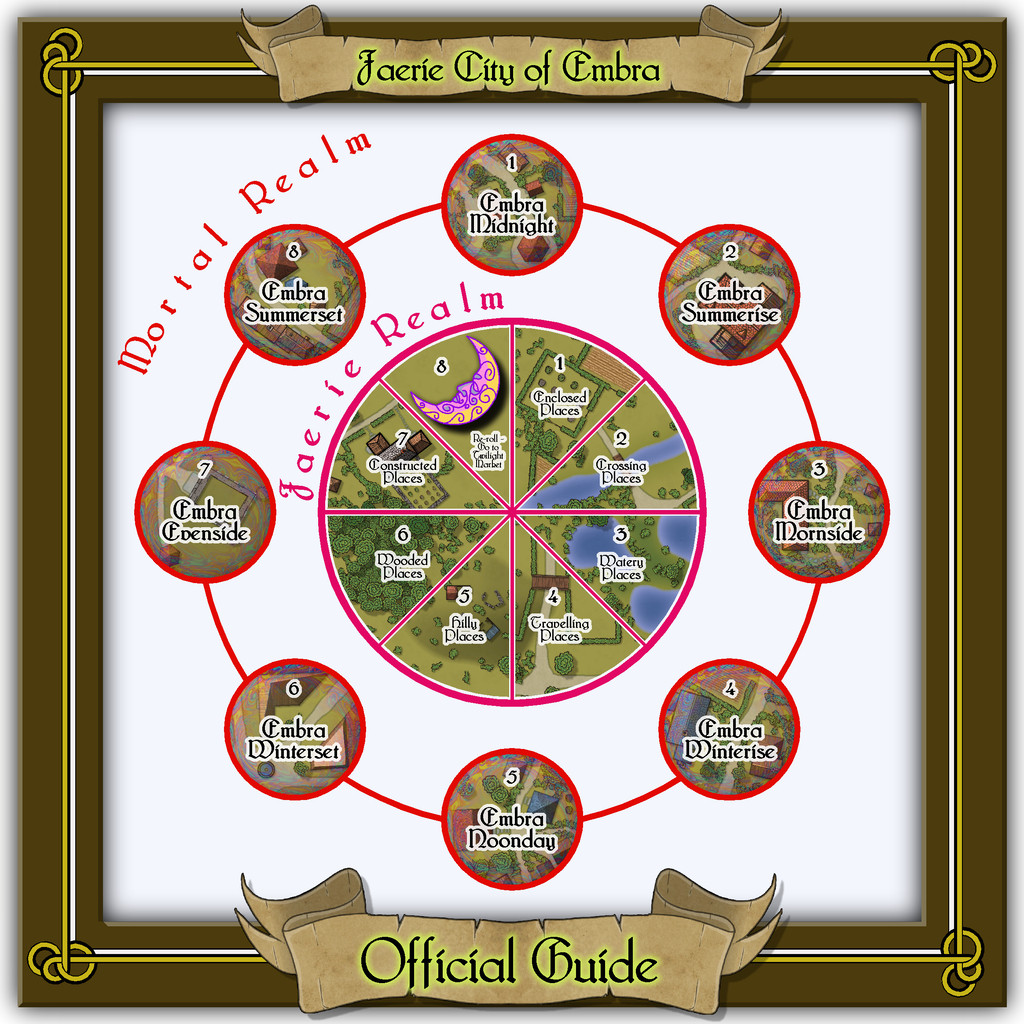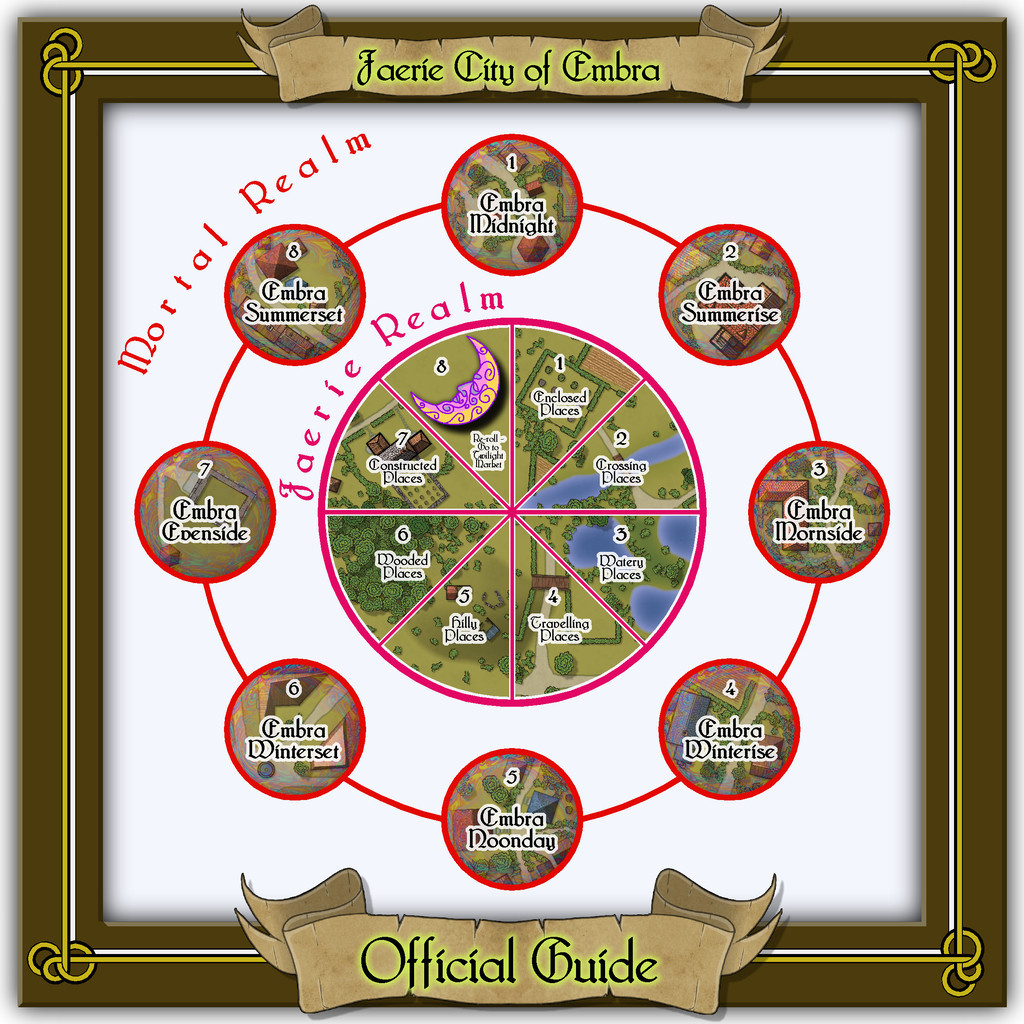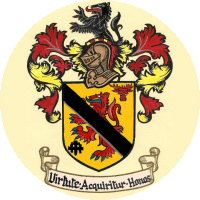
Wyvern
Wyvern
About
- Username
- Wyvern
- Joined
- Visits
- 3,127
- Last Active
- Roles
- Member
- Points
- 5,360
- Rank
- Cartographer
- Badges
- 24
-
Community Atlas: Embra - Villages
Continuing the circuit of villages brings us to Embra - Winterise, on the southeastern side:
A neat little village on the road, that seems curiously separated from the narrow River Clack here, with its mysterious bridge that no track leads to, and some equally mysterious ruins atop Gargam Hill. This time, the properties are all of only a single-storey each:
-
Community Atlas: Embra - Villages
The eastern village is Embra - Mornside, a name partly influenced by the real-world district of Morningside in Edinburgh, although naturally, it also fits neatly into the general naming conventions here (none of which is merely coincidental!).
Now the broader Clack has a small island in it, and one of the tributaries from the Clack Valley map features as well, the Wadingburn, in an especially prominent form.
There are more buildings too, a mix of larger and smaller properties, one of which, Gofannon's Farm, has an upper storey:
-
Community Atlas: Embra - Villages
Next in the sequence is the northeastern Village, Embra - Summerise:
Here, we have a broader River Clack, if still one with a ford. There are fewer buildings this time, although a couple are larger properties, particularly Mide House, treated as an inn in the accompanying map notes. In addition, there are two "interior" toggle options, one for the surface level:
And a second one for the upper floor of the inn:
-
Community Atlas: Embra - Villages
When approaching, or leaving, the Faerie city of Embra, and as discussed previously on the Forum, the settlement seems to be merely a village, whose appearance can be different depending on the direction involved. Eight such Village maps are provided for the Atlas, one for each of the main compass directions - north, northeast, east, southeast, south, southwest, west and northwest. As also noted earlier, the bases for these eight were randomly-picked maps from the two Judges Guild "Village" RPG map books, published in the late 1970s, reworked and amended in places to fit what was needed here.
Those base maps were all placed within hexagons, though I decided a circle would be more suitable here from very early in the process. Having set that, the overall appearance of the eight Village maps was quickly established, partly thanks to the banner, scalebar and compass-rose assets available in the CA169 Fantasy Town package chosen for the mapping.
A decision had been made too that variant Celtic knotwork borders were going to be key aspects of all the Embra maps. Finding a circular design was fairly straightforward - if unfortunately not using the CA23 Map Border options (as they work only for rectilinear borders). Those CC3+ designs did influence the general look to an extent, however, with the "Village" colours partly chosen following those used in the "Official Guide" map's border:
The final Village knotwork design was based on a couple found online, although one of those, what turned out to be my final choice, was also virtually identical to one in the Dover Clip-Art "Celtic Borders on Layout Grids" hardcopy book, mentioned in the introductory Forum topic as well. This then is the map for the "north" Village, Embra - Midnight:
The nature of these eight Villages, on the border between the Mortal and Faerie Realms, invited adding something to each map to reflect that, hence the pale, misty, oil-iridescence colours towards the edges, fading into the middle. This also gives a suggestion of viewing the map through an old, round window, lens, or in a mirror - Embra Through The Looking Glass, perhaps. That oil-patterning comes courtesy of @Loopysue's transparent City Domes symbols from CA144A.
Although scales and an unlabelled compass-rose are provided, nothing in the Faerie Realm is strongly fixed, so while the map is correctly drawn to the scales, GMs can adjust those distances, sizes and directions to best-suit their own needs. Similarly, the featured text below the compass-rose alongside the map can be used, adapted or ignored as the GM may wish. It was determined by a random tarot-card draw, as described previously, as an interpretation of what the card artwork showed or inspired.
Place-names on the maps were sometimes taken from their obvious nature, the surroundings of Embra as established on the Clack Valley map, my own earlier RPG mapping, or more commonly from a random choice of adapted names in Celtic mythology, primarily drawn from entries in James MacKillop's Dictionary of Celtic Mythology (Oxford University Press, 1998). Some of these are explored a little more in the PDF and text notes accompanying each map. The placement of the labels is necessarily somewhat obstructive at times, so a toggle in the Atlas FCW versions will allow them to be switched off for better clarity.
A second Atlas toggle on this Embra - Midnight map allows simple internal layouts for each building to be shown. The original Judges Guild settlement maps were always drawn like this, showing only cross-sections through the surface level's outer and interior walls and doorways, for almost every building. Indeed, this was established so early as the norm for RPG settlement maps, that I still struggle to make sense of the more recent RPG tendency of settlement plans that DON'T provide this option, but show just a - to me - sometimes confusing series of rooftops. This was part of the reason I decided to add this element for the Village, and many of the Places, maps for Embra, although a lesser aspect was I found it wasn't always easy to tell where the buildings were on some of the more heavily-vegetated maps. Most of the buildings have just a single room inside, while all occupy only the surface level on this map:
One aspect on most, but not all, these Village maps is the River Clack, which, as the Clack Valley map indicated, runs through the city. In Embra - Midnight, it is quite narrow, and crossed by a ford. Elsewhere among the Village maps, it can be broader or narrower, and bridged. In some cases, it becomes almost ditch-like. This variation, while adopted from the Judges Guild base-maps, was a deliberate choice from very early in the planning and construction process, to emphasize that Faerie is not the mundane world outside, where things may not be what they seem, even at such liminal places as these "outer" Villages.
While the Atlas connections favour moving from outside to an entry-village, and then on into parts of the city itself in Faerie (or reversing the process when wishing to leave Embra), there is no reason GMs could not opt to move the party from one Village to another as an extra possibility too, perhaps camping, or taking rooms at an inn, in one Village, only to wake next day in a quite different one - perhaps where the inhabitants are identical, say, for a little further confusion!
-
Community Atlas: Errynor Map 40 - Introducing the Faerie City of Embra
This first map of the 57 is designed to get visitors into the city from the outside world of the Clack Valley. A comparison with my early sketch for this link-map (shown above) indicates there wasn't much change along the way:
Indeed, its general layout was decided long before any of the other maps in the collection were prepared. However, this final form was among the last to be completed, thanks to needing extracts from some of those others. The frame decoration, as noted, is taken from the CA23 Map Border pack.
In the Atlas version, each of the numbered circles and central wedge-segments, except wedge 8, will link with their appropriate next maps in the Embra set. The outer ring of circles is the connection between the Mortal and Faerie Realms. Each circle leads to its separate Village map, showing how Embra appears from the outside, an appearance which can be different depending on its approach direction. As the names suggest, this outer ring is a compass-rose, representing in order north, northeast, east, southeast, south, southwest, west and northwest. GMs can opt to roll a D8, use the party's approach direction, or simply choose one of the Villages, to determine this initial connection. Similarly, when leaving Embra, the last place to be encountered will be one of these eight outer-ring Villages.
Segments 1 to 7 of the inner "pie-chart" connect with their respective "Places" schematic in the City itself, from where individual locations and streets within that type of Place can be accessed and explored. Segment 8 allows a random D8 roll to be used at GM's option to decide where a group may go next, as it provides the re-roll possibility mentioned in my earlier posting here, where the party would then be able to go directly to the Twilight Market from whichever set of Places was finally picked. GMs might alternatively decide by preference, or using the magical Law of Similarity, to select the next location instead. For example, if the party opened a gate to enter a field in whichever Village or Place they were in, by Similarity, they could then go to somewhere from the Enclosed Places selection. Had they been crossing a stream, they could have gone to one of the Crossing Places, and so on.
This is not necessarily all obvious from just the Official Guide schematic, and although there are PDF and text notes with the Atlas map, I felt it would be helpful to add some short comments to the map itself. By chance, the February 2022 issue of the Cartographer's Annual was published while this map was being finalised, providing an ideal opportunity to make use of one of its key elements as "The GM's Little Red Book". The full Official Guide map then, looks like this:



